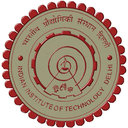Antioxidant Machinery Related to Decreased MDA Generation by Thymus Algeriensis Essential Oil-induced Liver and Kidney Regeneration.
Cuvinte cheie
Abstract
OBJECTIVE
This study was conducted to determine the histopathological and biochemical effects of Thymus algeriensis essential oil (TEO) on hydrogen peroxide (H2O2)-induced oxidative stress in liver and kidney tissues of rats.
METHODS
Rats were treated in six groups and were exposed for 2 weeks to low (LD; 100 μmol/L) and high doses (HD; 1 mmol/L) of H2O2 in the presence or absence of TEO (180 mg/kg). Liver and kidney atrophy was measured by using biochemical and histopathological assays.
RESULTS
Our study demonstrated that H2O2 induced liver and kidney atrophy, as evidenced by the significant elevation of serum aminotransferase, urea, and creatinine levels compared with those in the control rats. Urea levels were estimated by evaluating the activity of serum urease that hydrolyzes urea into CO2 and ammonia. However, TEO treatment significantly alleviated oxidative stress in the H2O2-induced liver and kidney toxicity model by reducing the levels of malondialdehyde concomitantly with marked elevations in superoxide dismutase, catalase, glutathione peroxidase, and glutathione S-transferase, as well as decrease in glutathione activity.
CONCLUSIONS
Our data demonstrated that TEO protected against H2O2 toxicity by decreasing oxidant levels and DNA damage, as well as increasing antioxidant levels, indicating that TEO has a spectrum of antioxidant and DNA-protective properties.


